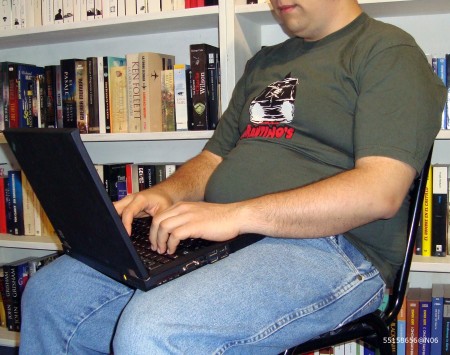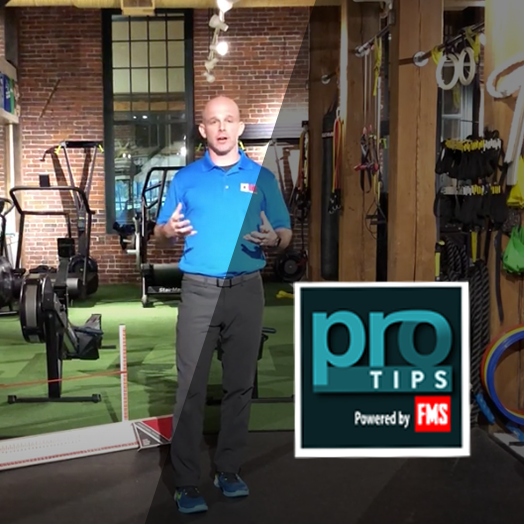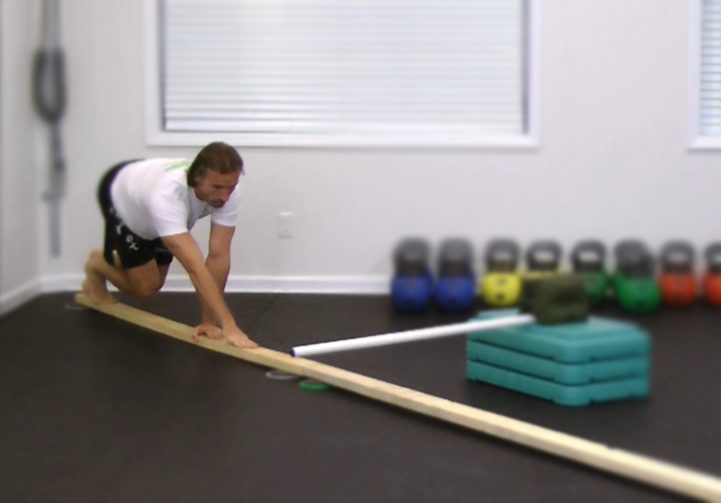Why don't you block the Lumbar Spine on the Active Straight Leg Raise Test?
Written by Gray Cook FMS
There are some common questions asked at our courses. Here is one I was asked about the Active Straight Leg Raise screen.
“With the active straight leg raise test, how come I have not heard much talk about using a small towel or hand placement in the lumbar spine to possibly show a truer hamstring length test as opposed to showing people who may get some extra range of motion from the lumbar spine during the test?”
Well, first of all, very good question, and the first thing I want to do is make a statement about the movement screen. The one thing the movement screen does not do is measure movement. Okay. If we just need to do a hamstring test, we should just break out a goniometer, lock up everything else and do a hamstring test.
The purpose of the Functional Movement Screen is to rank and rate movement patterns so the active straight leg raise test actually is not a hamstring test at all. It is a leg separation test. When we see people who have difficulty lifting the right leg up while the left leg is down, we don’t say that’s a tight hamstring because the left leg down could have limited hip extension. It could be a tight hip flexor and that tight hip flexor causes an anterior pelvic rotation that limits the right leg going up. Therefore, you may not have a tight hamstring and stretching that hamstring won’t do a thing about the left leg hip extension. So the purpose of the active straight leg raise test in the Functional Movement Screen is not to measure hamstring length. It’s to capture the pattern of movement that has the greatest restriction and greatest asymmetry.
That’s why we do 7 tests. We look at your squat, your hurdle step, your lunge, your active straight leg raise, shoulder mobility, push-up, and rotary stability. We don’t measure each one of those. We rate and rank them with a scoring criteria that basically finds the weakest link in your movement patterns. We don’t assume that one muscle is responsible for a bad movement pattern. We see discrepancies with mobility and stability throughout the body.
Another issue we see on the active straight leg raise test is there may not be a mobility issue at all, but rather, a lack of pelvic control and poor core stability. These can also leave you unable to complete the leg raise.
Now, there is one thing we want to do to control compensation in movement. If you look at the criteria of the Functional Movement Screen test for the active straight leg raise, we do not allow any movement of the lower leg whatsoever. No knee bend. No change in hip flexion or extension. Absolutely no external rotation. So holding that lower leg down is a little bit harder than you think and some people get sloppy with that test but keeping that lower leg from not moving renders most of the movement in the pelvis and lumbar spine ineffective.
But just remember, we not testing hamstring length here because you’ve got a good point. If we wanted to test hamstring length, we need to do it by locking up the lumbar spine. But what we’re doing is setting you up to show us your greatest limitation in a movement pattern if possible.
Now, having said all this stuff, just let me put out a reminder. If there is a hamstring length problem, we’ve got to put on our thinking caps and think, “Why are there tight muscles in the body?” “Why is there a tight hip flexor on the opposite side of a tight hamstring?” Have you ever noticed that? This is because usually they exist in an opposing pattern. Now, Yanda talked about a lower crossed syndrome. It’s almost like drawing an “X” on somebody standing to the side of you and that “X” basically encompasses the hip flexor, the glutes, the abs and the low back. Many times we’ll see weak glutes and abs, and at the exact same time we’ll see tight and strong hip flexors and low back extensors.
So that’s a whole pattern there and stretching one of those muscles won’t change a damn thing. It doesn’t even come close to changing anything. You’ve got to break the pattern because every time a person with a lower crossed syndrome will get into a stressful situation, whether it be a little too much weight in a back squat or a single leg dead lift or something like that, they will go in, jack up that hip flexor and low back, and pretty much let go of the abs and glutes. One of these situations can actually cause hamstring tightness. The hamstrings aren’t tight because they want to be. They’re tight because they’re pulling double duty. They’re having to function as a hip extender and knee flexor at the same time.
So when you find those tight hamstrings, whether you find them with a goniometer or whether they’re implied by the active straight leg raise and poor separation of one hip to the other. However you find that hamstring issue, just remember, if you’re not strengthening the glute, if you’re not looking at the core, you’re probably missing the fact of why the hamstrings are tight in the first place. You’re basically using a tight hamstring inappropriately as a stabilizer because it can posterior pelvic tilt you just like the abs can if you think about it.
Go back and look at your anatomy and see how they work. If your stabilizers aren’t working effectively, your prime movers – the hamstring being one of them – will actually have to tighten up and perform a stability role. And remember this, your stabilizers don’t have to be stronger than your prime movers. They can’t be but they’ve got to fire first. So when we’re training stability, we don’t train it with sets and reps of concentric exercise. If we’re training stability, we train you not to move. We’re looking at that glute medius and glute activity, first statically stable before dynamically moving.
To round out the question, remember in the movement screen, we’re just rating and ranking patterns. We’re not trying to measure specific muscle length, and secondly, if you do find a muscle length problem, there is a muscle strength problem somewhere else. We’ll find that too because if you add a little bit of length and don’t add the strength, you’re going to lose the length the very next day and you’re stuck stretching the rest of your life.
Related Resources
-
FMS in Various Training Scenarios
Posted by Mike Perry
-
MovNat Drills at CK-FMS
Posted by Gray Cook





